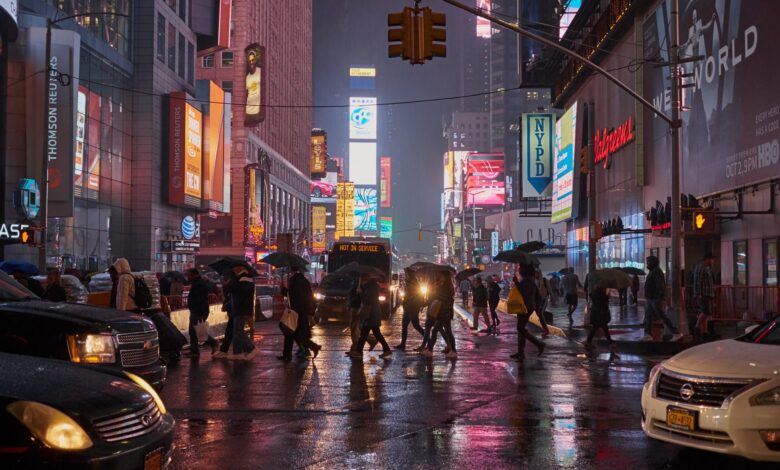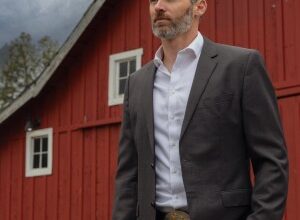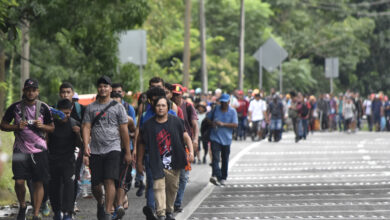Where New York City went wrong in 2023 — and how to fix it

I’m honored to write this column — and with writing comes the privilege of hearing from readers.
Below is a sampling of the constructive criticism I’ve received this year from strangers and friends — and my best effort to respond to that criticism.
You can’t blame Mayor Adams or his predecessor for the fact murder is still up, relative to 2019. Murder is up nationwide since 2020.
Yes, but it rose far faster in New York in 2020 and 2021, compared with the rest of the country.
In 2022, even after a decline that year, New York murders were still 37% higher than they were in 2019.
Nationwide, by contrast, they were 25% higher. New York likely ended 2023 with murders still 22% higher than in 2019, with murder falling faster in the country as a whole.
New York, with its vast wealth and lavish public-sector spending, has no excuse for lagging the country.
New York is still America’s safest big city, so why care about a little increase in murder?
There’s no law that says we’ll always remain the safest big city.
Contrary to the urbanist creed, a dense city isn’t automatically safe.
In 1990, New York’s murder rate, at 31 per 100,000 people, was more than three times that of the nation’s 9.4 killings per 100,000 people.
By 2019, the city’s murder rate was just 3.8 per 100,000 people, less than three-fourths of the national rate.
That decline took a lot of work — and it also meant, over much of the 2010s, bucking the national trend.
Even as murders nationwide rose in the middle of the last decade, they remained near record lows in New York through 2019.
So, yes, we should be concerned that by 2022, New York’s murder rate, at 5.2 per 100,000 people, had crept up to 83% of the national average.
We likely didn’t reverse this poor performance, compared with the country, in 2023.
Mayor Adams can’t do anything about the migrant crisis. It’s a national issue.
It’s true that it’s President Biden’s job to secure the border — but Adams has never consistently suggested the president do so.
And the direct strain on the city budget caused by the migrant crisis — at least $4 billion a year, according to the mayor’s budget projections — is due to the city’s unique “right to shelter.”
Though Adams has made some positive tweaks, including trying to impose time limits on stays, he still hasn’t questioned the 40-year-old legal settlement that supposedly obligates the city to provide everyone with shelter.
Immigrants are good for the city anyway, so why fret?
Sure, New York City was built on immigration, and the city was home to half a million unauthorized immigrants before 2022.
But there’s a big difference between then and now: Previous immigrants used informal networks to secure private housing and off-the-books jobs in a booming economy.
Over the past year and a half, encouraged by Biden’s open border and a new worldwide knowledge of the city’s right to shelter, tens of thousands of immigrants have come expecting the city to provide them with housing and to help them win the legal right to work.
Why complain about e-bikes when cars and trucks are far more dangerous?
Yes, cars and trucks are more dangerous, which is why I support everything the state and city do to make them (or their drivers) less dangerous: lower speed limits, speed and red-light cameras, bike lanes and wider sidewalks.
These things work, which is why New York’s pedestrian deaths remain near historic lows, 93 through the end of November, compared with 104 during the same 11 months of 2019.
This also proves New York can still buck a national trend.
But it makes no sense if you care about traffic deaths to ignore a brand-new danger.
Since New York legalized e-bikes in 2020, they have been a scourge.
This year alone, e-bike or moped operators have killed three pedestrians, and e-bike battery fires have killed 18 New Yorkers.
E-bikes have propelled a huge increase in bicyclist deaths — 21 of 29 cyclist deaths in 2023, the highest cyclist deaths in a quarter-century.
The fatalities include seven crashes in which no other vehicle was involved, meaning you can’t blame cars.
E-bikes are making New York’s streets more dangerous.
New York always bounces back, so why worry?
New York bounces back because people worry.
The city was not built on complacency or resting on the accomplishments of the past.
Happy New Year!
Nicole Gelinas is a contributing editor to the Manhattan Institute’s City Journal.




